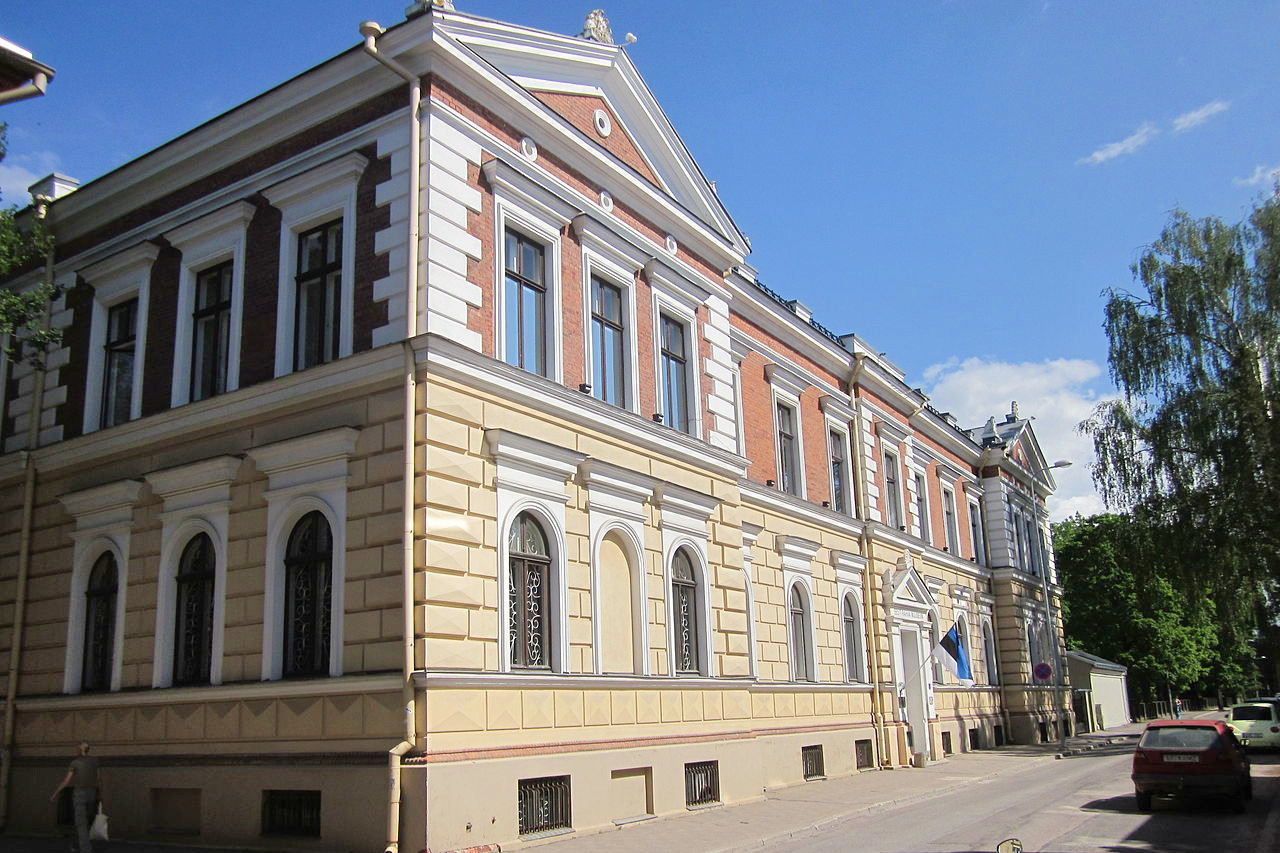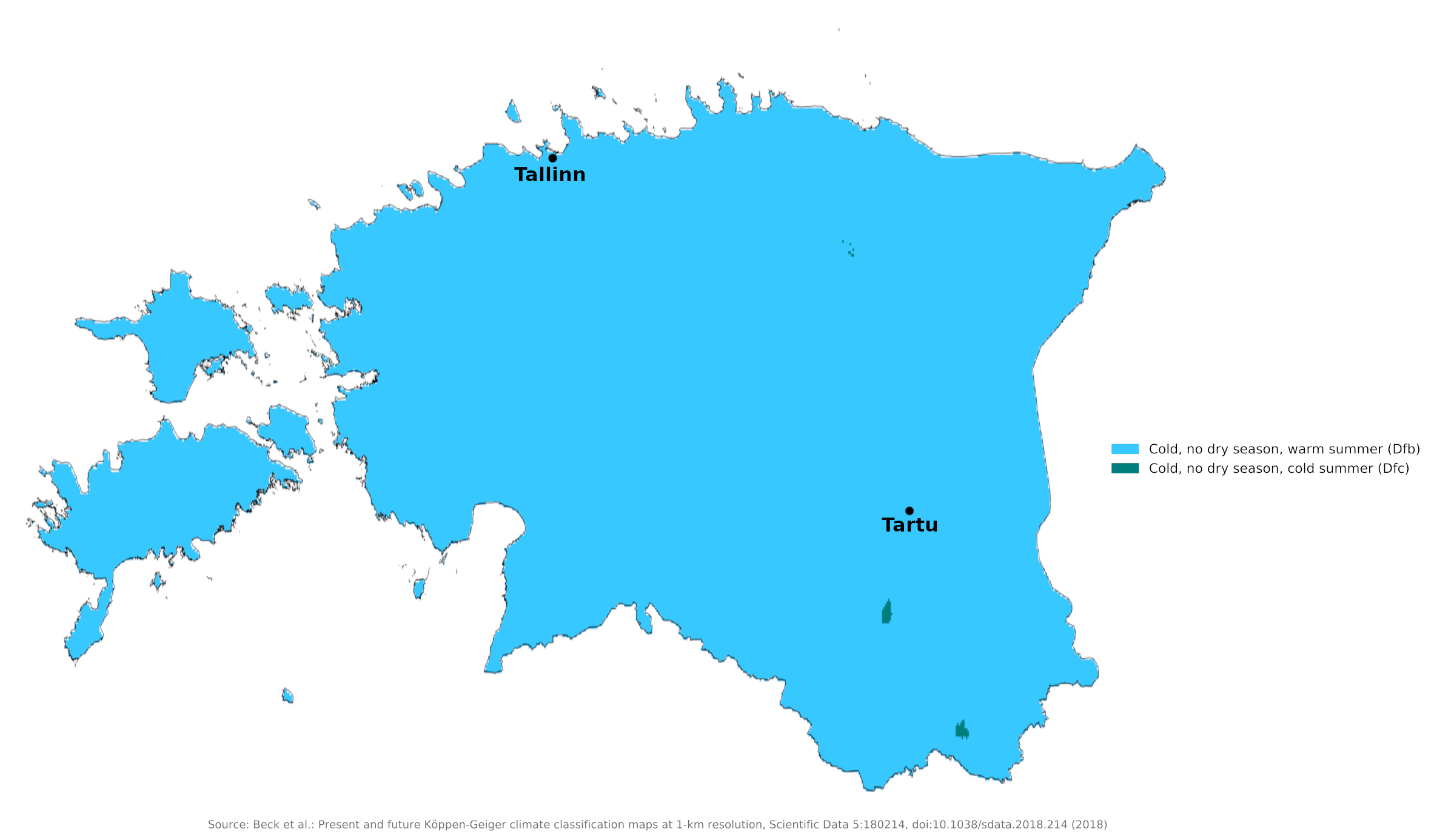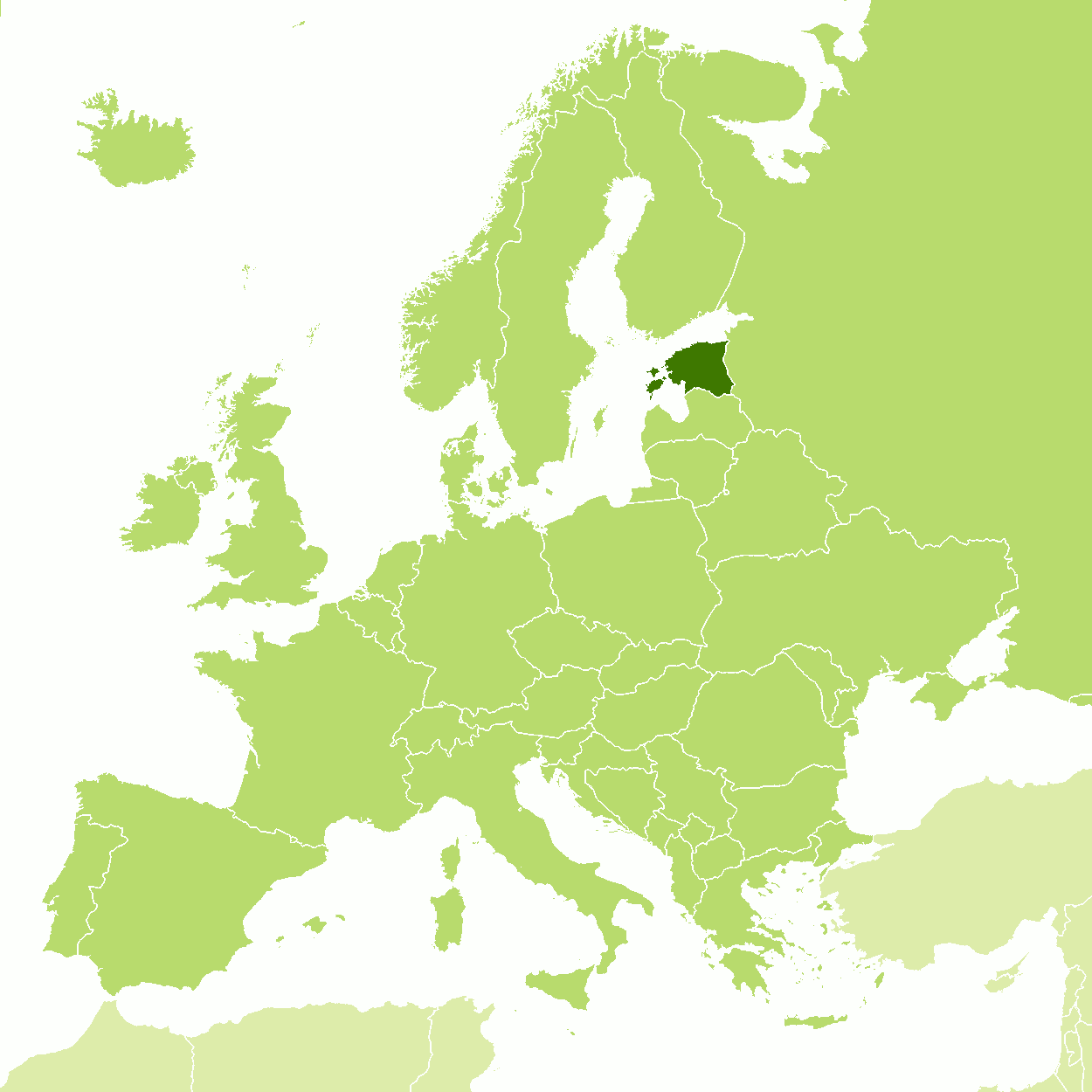The Climate of
Estonia
 Estonian National Museum, Tartu
Estonian National Museum, Tartu
Climate Map
 Climate map of Estonia
Climate map of Estonia
What is the climate of Estonia like?
Estonia is a small country in northeastern Europe, located between Latvia and Russia and bordering the Gulf of Finland, the Baltic Sea, and the Gulf of Riga.
Despite its north European location, Estonia has a surprisingly mild climate. This is largely due to the warm winds that sweep across it from the Baltic Sea which keeps the climate moderate along the coast. Inland, temperatures are typically a little more extreme.
Estonia has four seasons of near-equal length. Summers in Estonia are generally mild, with temperatures averaging 18°C (64°F). Winters are cold, with temperatures usually remaining below freezing from mid-December to late February. However, the winter climate is moderated the influence of the Baltic Sea, which does not freeze for prolonged periods. Estonia is open to weather influences coming from the Atlantic and northwest Europe; however during severe spells of winter weather it is dominated by cold winds from the interior of Russia. As a general rule, the more inland you travel, the hotter the summers and colder the winters become.
Rainfall is moderate, it is heaviest during the summer and lightest in the spring. July and August are typically the wettest months. Rainfall averages about 700 millimeters (28 inches) in most places.
| Climate data for Tallinn (1991–2020) | |||||||||||||
|---|---|---|---|---|---|---|---|---|---|---|---|---|---|
| Month | Jan | Feb | Mar | Apr | May | Jun | Jul | Aug | Sep | Oct | Nov | Dec | Year |
| Average high °C (°F) | −0.7 (30.7) | −1.0 (30.2) | 2.8 (37.0) | 9.5 (49.1) | 15.4 (59.7) | 19.2 (66.6) | 22.2 (72.0) | 21.0 (69.8) | 16.1 (61.0) | 9.5 (49.1) | 4.1 (39.4) | 1.2 (34.2) | 9.9 (49.8) |
| Daily mean °C (°F) | −2.9 (26.8) | −3.6 (25.5) | −0.6 (30.9) | 4.8 (40.6) | 10.2 (50.4) | 14.5 (58.1) | 17.6 (63.7) | 16.5 (61.7) | 12.0 (53.6) | 6.5 (43.7) | 2.0 (35.6) | −0.9 (30.4) | 6.4 (43.5) |
| Average low °C (°F) | −5.5 (22.1) | −6.2 (20.8) | −3.7 (25.3) | 0.7 (33.3) | 5.2 (41.4) | 9.8 (49.6) | 13.1 (55.6) | 12.3 (54.1) | 8.4 (47.1) | 3.7 (38.7) | −0.2 (31.6) | −3.1 (26.4) | 2.9 (37.2) |
| Average precipitation mm (inches) | 56 (2.2) | 40 (1.6) | 37 (1.5) | 35 (1.4) | 37 (1.5) | 68 (2.7) | 82 (3.2) | 85 (3.3) | 58 (2.3) | 78 (3.1) | 66 (2.6) | 59 (2.3) | 700 (27.6) |
| Source: Estonian Weather Service | |||||||||||||
| Climate data for Tartu (1991–2020) | |||||||||||||
|---|---|---|---|---|---|---|---|---|---|---|---|---|---|
| Month | Jan | Feb | Mar | Apr | May | Jun | Jul | Aug | Sep | Oct | Nov | Dec | Year |
| Average high °C (°F) | −1.8 (28.8) | −1.6 (29.1) | 3.3 (37.9) | 11.1 (52.0) | 17.1 (62.8) | 20.6 (69.1) | 23.1 (73.6) | 21.8 (71.2) | 16.3 (61.3) | 9.2 (48.6) | 3.3 (37.9) | 0.0 (32.0) | 10.2 (50.4) |
| Daily mean °C (°F) | −4.1 (24.6) | −4.4 (24.1) | −0.5 (31.1) | 5.9 (42.6) | 11.5 (52.7) | 15.5 (59.9) | 18.0 (64.4) | 16.7 (62.1) | 11.8 (53.2) | 6.0 (42.8) | 1.2 (34.2) | −2.1 (28.2) | 6.3 (43.3) |
| Average low °C (°F) | −6.5 (20.3) | −7.3 (18.9) | −4 (25) | 1.2 (34.2) | 5.8 (42.4) | 10.3 (50.5) | 12.9 (55.2) | 12.0 (53.6) | 8.0 (46.4) | 3.3 (37.9) | −0.8 (30.6) | −4.2 (24.4) | 2.6 (36.7) |
| Average precipitation mm (inches) | 48 (1.9) | 39 (1.5) | 36 (1.4) | 35 (1.4) | 54 (2.1) | 88 (3.5) | 67 (2.6) | 79 (3.1) | 55 (2.2) | 68 (2.7) | 55 (2.2) | 51 (2.0) | 673 (26.5) |
| Source: Estonian Weather Service | |||||||||||||
References
- E. A. Pearce, Charles Gordon Smith, (1990) The Hutchinson World Weather Guide, John Murray Press. ISBN 1859863426
- Timothy L. Gall, (ed.), (2003), Worldmark Encyclopedia of the Nations, Eleventh Edition, Thomson Gale
- Federal Research Division, Library of Congress, (1996), Estonia, Latvia & Lithuania: country studies. Claitor's Pub. Division. ISBN 0844408514
- Hugh Chisholm, (ed.), (1911), Encyclopædia Britannica, Eleventh edition, Cambridge University Press
The Climate of
Estonia

In summary:
Estonia has a similar climate to the adjacent parts of Russia, but is a little milder thanks to the moderating influence of the sea. Summers are generally cool, and winters are cold, with temperatures often below freezing.
Rainfall is moderate, averaging about 700 mm (28 in).